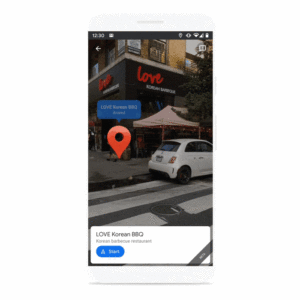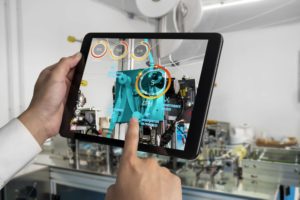The New Power Couple: AR + Indoor Positioning
Why We Need Indoor Positioning
Many AR use cases are location-based, meaning the objective is located or completed at a specific place. This requires high accuracy and scalability to cover large areas. When the target or task is outside, the app can simply rely on the phone’s GPS. An example of this is Google’s AR Street View. However, indoors, GPS is not available.
Using Visual Positioning is cumbersome for the user, prone to errors, and is only relevant in small defined spaces.
Other indoor positioning technologies like Wi-Fi and beacons fail due to poor accuracy and require extensive hardware to deploy.
This is why an indoor positioning system (IPS) that doesn’t require hardware is the best underlying technology to enable all location-based features for indoor AR. AR’s technology is then layered on top, giving us capabilities like 3D maps for navigation, location-based questing in games, and more.
Using the earth’s magnetic field, Oriient’s indoor positioning can accurately pinpoint a location within 3 feet (1 meter) and requires no hardware. It uses the distortions that physical structures create in the magnetic field to map indoor spaces, enabling positioning at scale, where legacy systems cannot. Developers can easily integrate Oriient’s SDK into any application to enrich their final product with location.

IPS is responsible for enabling a seamless AR experience indoors even when the user is not actively using the application or the device is facing the wrong way. For example, if the user has navigated to one item on their shopping list, the user may tuck the phone into their pocket to place the item in their cart. If they pull their phone out again later to find another item, the app will still be guiding them to their next destination. This also increases safety, reducing the chance a user will walk into something while using the app.
In addition, because indoor positioning enables AR apps to continue to run smoothly even when the user is not actively engaging with them, apps can collect valuable location data in the background, as well as push relevant, location-based information and alerts to encourage interaction, even when the camera is switched off.
Better Together
Imagine being able to transform an entire chain of malls into experience centers, where a visitor’s device can both educate them about offerings and delight them with game-like experiences as they shop, driving up average basket and retention. Or imagine an app able to direct a technician to the exact location of an incident and guide them through the repair process in real-time, eliminating guessing, errors, and demonstrating proof the job was completed.
This revolution is underway, with the marriage of indoor positioning with AR to enrich our lives in countless ways AR would not be able to do on its own.
Repair Example; Source: XR Labs

